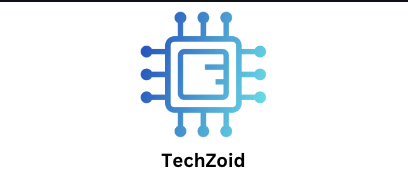For the treatment of joint inflammation or other inflammatory diseases including lupus, rheumatoid arthritis, severe allergies, and asthma, your doctor can recommend a steroid injection. Prednisone, methylprednisolone, and cortisone are among the several forms of corticosteroids.
What is the mechanism of action of steroid injections?
Your immune system reacts to illness or injury by releasing inflammatory cells that promote healing. That initial irritation goes away as you recover. Ongoing pain, however, may result from chronic or longer-lasting inflammation brought on by certain illnesses and traumas.
The corticosteroids that are administered by steroid injections temporarily suppress your immune system, just as the cortisol your body produces. This lessens inflammation, which lessens discomfort. Although steroids don’t have any inherent healing qualities, they can help you feel well enough to participate in physical therapy and other forms of rehabilitation that can help fix your body’s problems.
How Do You Give Steroids?
A needle will be used to provide your shot. The process changes according on the shot’s intended use. Usually, your doctor will place a needle beneath your skin where the discomfort is. In certain situations, your doctor may use a local anesthetic to numb the area where the steroid injection is administered.
However, certain injections need for a more intricate procedure. To direct the needle to the area of your body that requires treatment, your doctor may employ imaging equipment, such as an ultrasound or CT scan. After it’s in the proper place, you’ll receive an injection of steroids after an anesthetic to numb the area.
An intravenous infusion can also be used to provide steroid injections. In this kind of operation, a medical professional puts a needle into your vein, and over a certain amount of time, the steroid enters your circulation. In the hospital or at an outpatient infusion facility, you will get an intravenous infusion.
Sites for injecting steroids
Steroid injections are frequently administered directly into the area of the body they are intended to treat, such a sore joint. Typical injection locations consist of:
The feet
The hands
The hips
Knees
The shoulders
The spine
A vein in your arm will probably be the injection location if you are receiving an IV steroid injection. This will enable the steroid drug to enter your bloodstream and go to the inflammatory areas of your body.
Steroids in the system
Systemic steroids, which travel throughout your bloodstream to reach different locations, may be necessary when inflammation spreads throughout your body. Systemic steroids are necessary for conditions like lupus and systemic vasculitis, which is an inflammation of the blood vessels. There are several ways to administer them:
Intravenous
administered to a muscle
Orally, via tablets
Steroids locally
Certain sites of inflammation are treated with local steroid injections. For instance, a local steroid injection will be administered straight into the toe if you have excruciating arthritis in that area. To minimize therapeutic adverse effects, physicians prefer local steroids over systemic steroids wherever feasible.
Which Conditions Are Treated by Steroid Injections?
Injections of steroids provide short-term relief for a number of illnesses. They lessen inflammation and discomfort.
Injections of steroids for sciatica
When a bulging or herniated spinal disk presses against a nerve root in your spine, it can cause sciatica, a painful ailment. Your sciatic nerve, which runs from your butt down both legs, becomes inflamed and painful as a result. Injections of steroids can lessen this discomfort. Up to three times a year, they are administered.
Injections of steroids for plantar fasciitis
Inflammation of the plantar fascia, the connective tissue on the bottom of your foot, results in plantar fasciitis. Your heel may get very painful and stabbed as a result. Injecting steroids into your heel reduces inflammation and discomfort for around a month.
Injections of steroids for keloids
Raised scar tissue known as keloids can form following skin injuries brought on by trauma, body piercings, surgery, acne, and other conditions. Keloids can be made smaller and less irritating by injecting them with steroids. In order to stop keloids from developing at the site of the incision, doctors may advise steroid injections prior to surgery.
Injections of steroids for bursitis
Fluid-filled sacs called bursae (plural of bursa) act as cushions and lessen friction between bones, tendons, ligaments, and skin. The painful inflammation of a bursa is called bursitis. Usually, it affects your hips, elbows, knees, and shoulders. When administered to the region around the injured bursa, steroid injections decrease inflammation and alleviate discomfort.
Injections of steroids for tendonitis
Inflammation of the tendons, which are the tissues that link your muscles and bones, is known as tendinitis. It frequently affects the knees, elbows, and shoulders and is frequently brought on by overuse or strain injuries. One of the most prevalent forms of tendinitis is tennis elbow. To promptly alleviate pain and swelling, your physician will provide a steroid injection straight into the injured tendon.
Injections of steroids for arthritis
One or more joints become painfully inflamed when someone has arthritis. The pain in your ankles, hips, elbows, knees, shoulders, hands, feet, spine, and wrists can be promptly relieved with steroid injections.
Additional circumstances
For pain and inflammation brought on by other medical disorders, your doctor could suggest steroid injections, such as:
Autoimmune diseases like multiple sclerosis and lupus
Inflamed spinal nerves and back discomfort can make your arms and legs hurt.
A pinched nerve in your neck causes cervical radiculopathy, which results in discomfort in your hands, arms, shoulders, and neck.
A pinched nerve in your wrist is known as carpal tunnel syndrome.
Trigger thumb and trigger finger: they make your afflicted finger feel like it’s locking.
